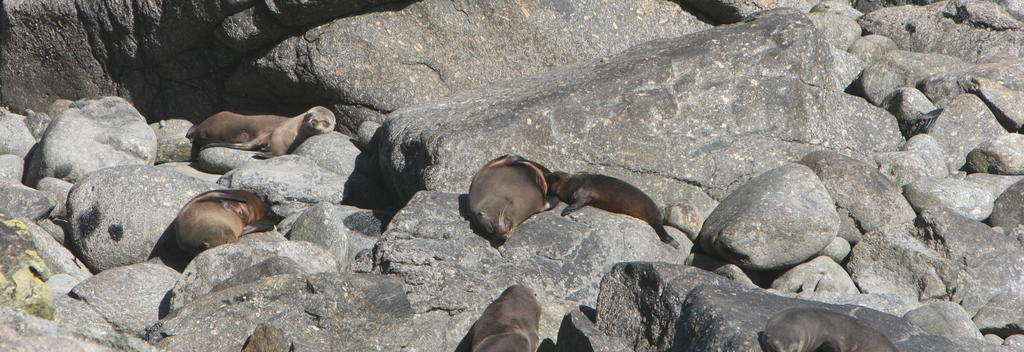-
Popular places to visit
Popular things to do
Helpful tips
Here's a few useful links to help with planning your trip to Aotearoa New Zealand.
-


Enjoy a close encounter with New Zealand fur seals in their natural habitat on the wild west coast of the South Island.
A female New Zealand fur seal lives at the same colony all her life. After giving birth in late November, and mating a week or so later, she takes feeding trips to sea for a few days at a time followed by up to seven days nursing her playful pups. This means a breeding colony - like the one at Tauranga Bay, Cape Foulwind - offers plenty of activity to observe at any time of the year.
The males arrive in late November and begin competing for the right to mate. The successful males will attract a group of up to 16 but normally less than seven females. The males remain ashore and do not feed for up to two months during the breeding season. Most return to the sea by mid-January.
From the car park at Tauranga Bay, a very well formed 10-minute track leads to viewing platforms over the seal colony below. Interpretive panels at the platforms provide information on the activity in the colony and the seals' breeding cycle, as well as historical information about the sealing industry that once existed in New Zealand.
A 1.5 hour coastal walk from Cape Foulwind south to Tauranga Bay passes along the edge of an escarpment, undulating grazing pasture, a sandy beach and granite bluffs. The walk offers panoramic views of the cape and the rugged coastline. A side track leads to the Cape Foulwind lighthouse.
Abel Tasman was the first European to sight the cape on 14 December, 1642. To commemorate this, a mounted astrolabe (early astronomical instrument) and interpretive display are situated on a spur overlooking Tauranga Bay. Tasman named the promontory Rocky Cape, but it was Captain Cook who later gave it the name Cape Foulwind. Cook's ship the Endeavour was blown well out to sea from this point in a particularly unpleasant patch of weather.
Looking for deals